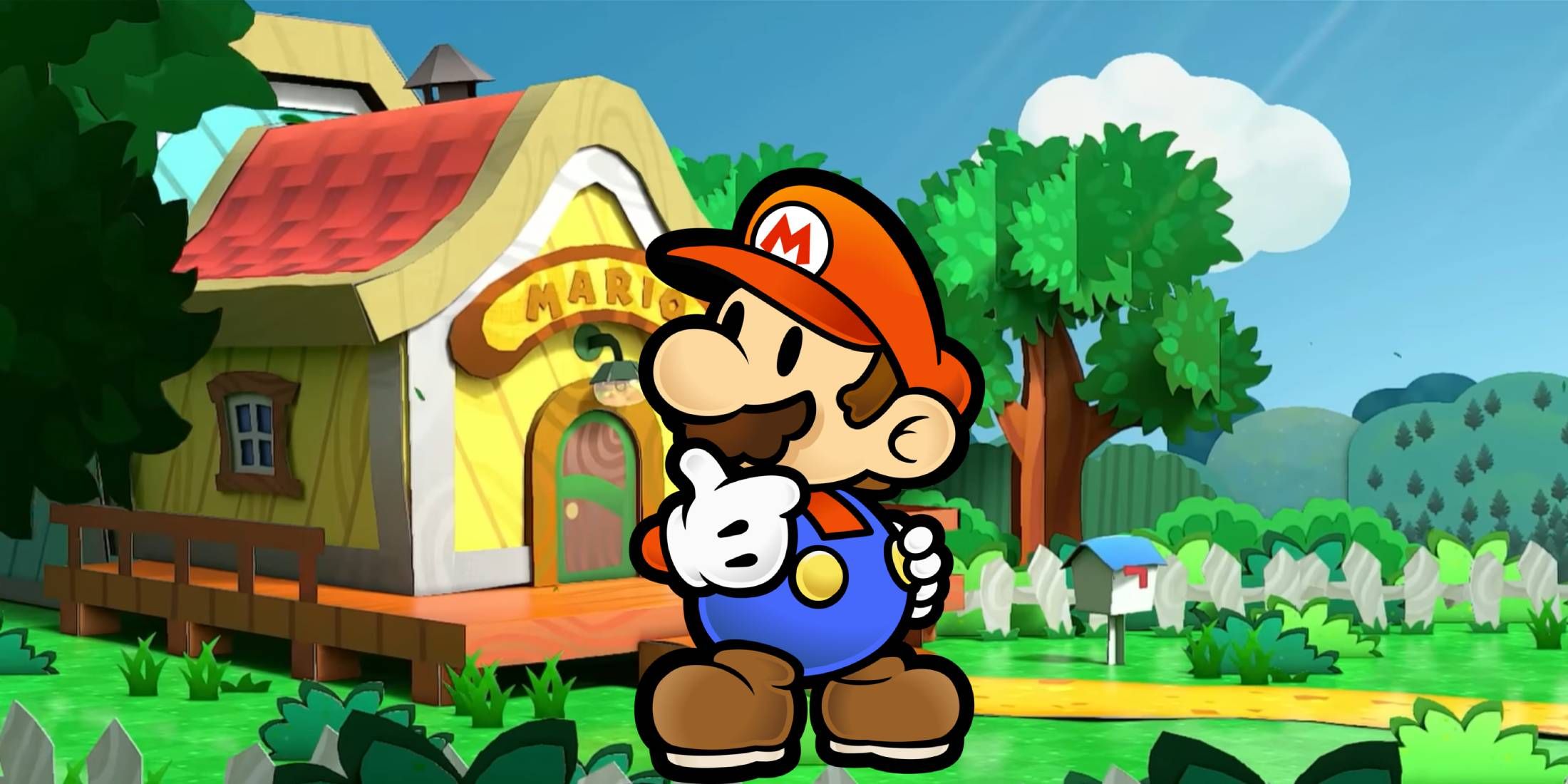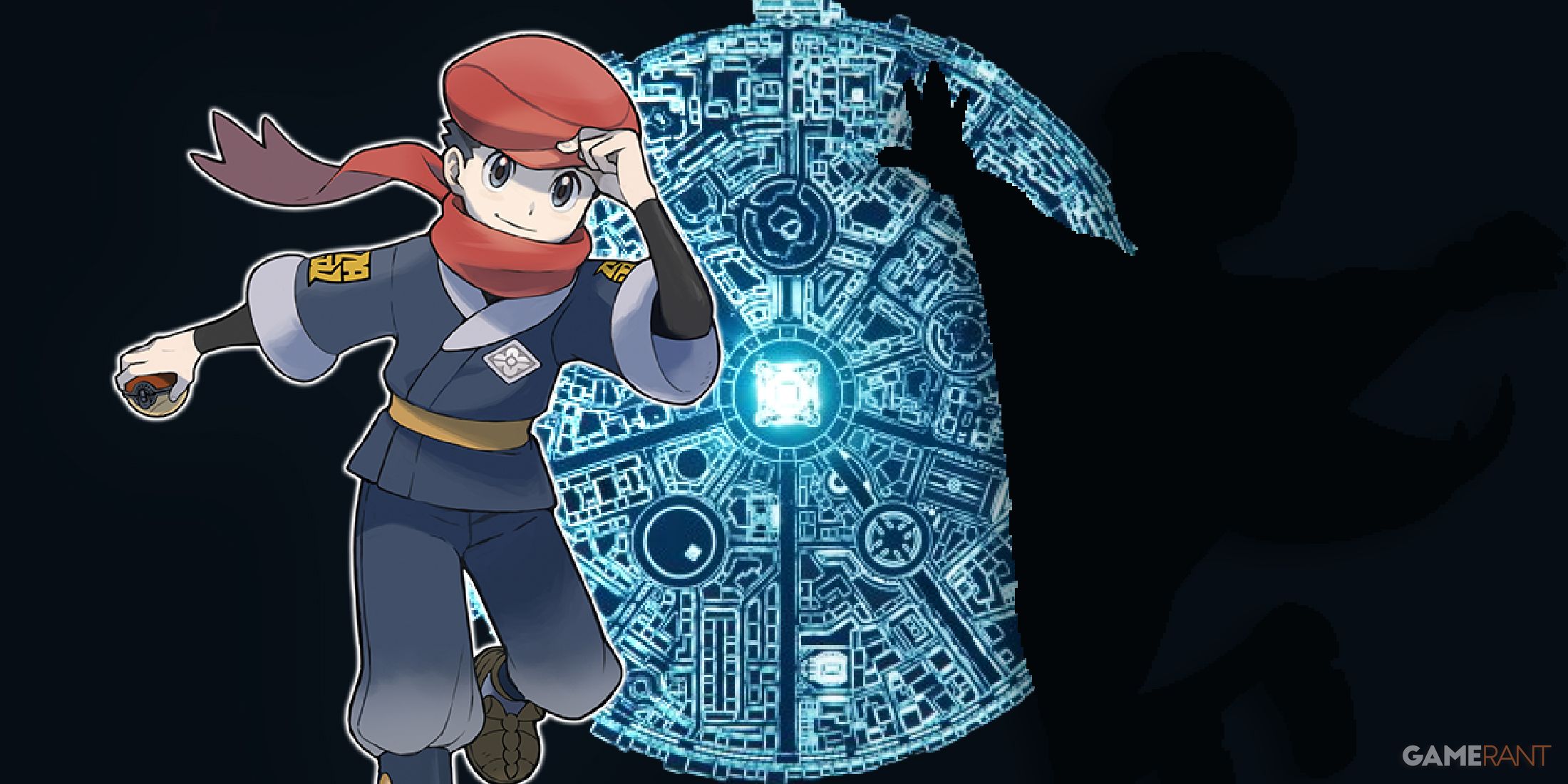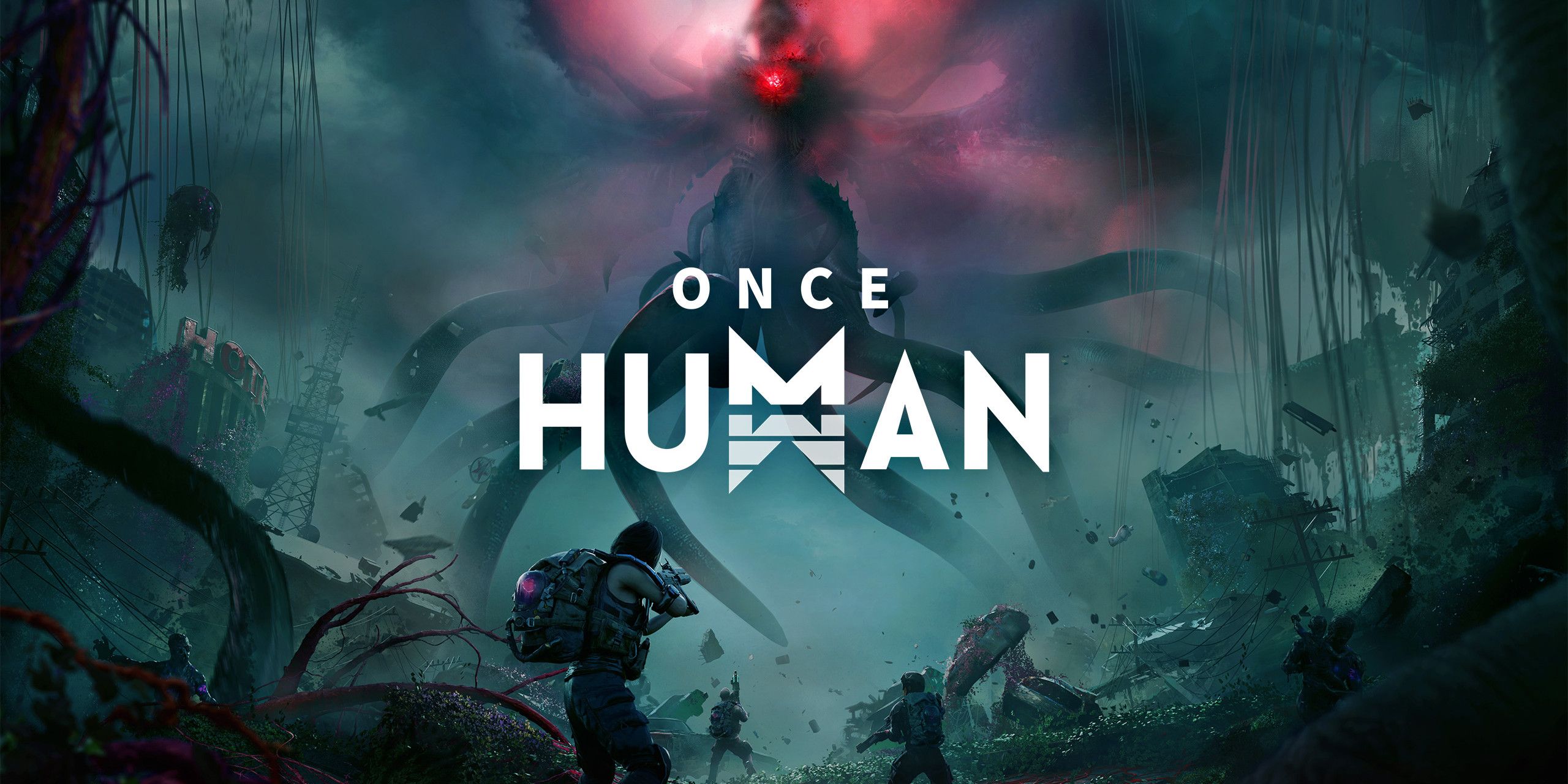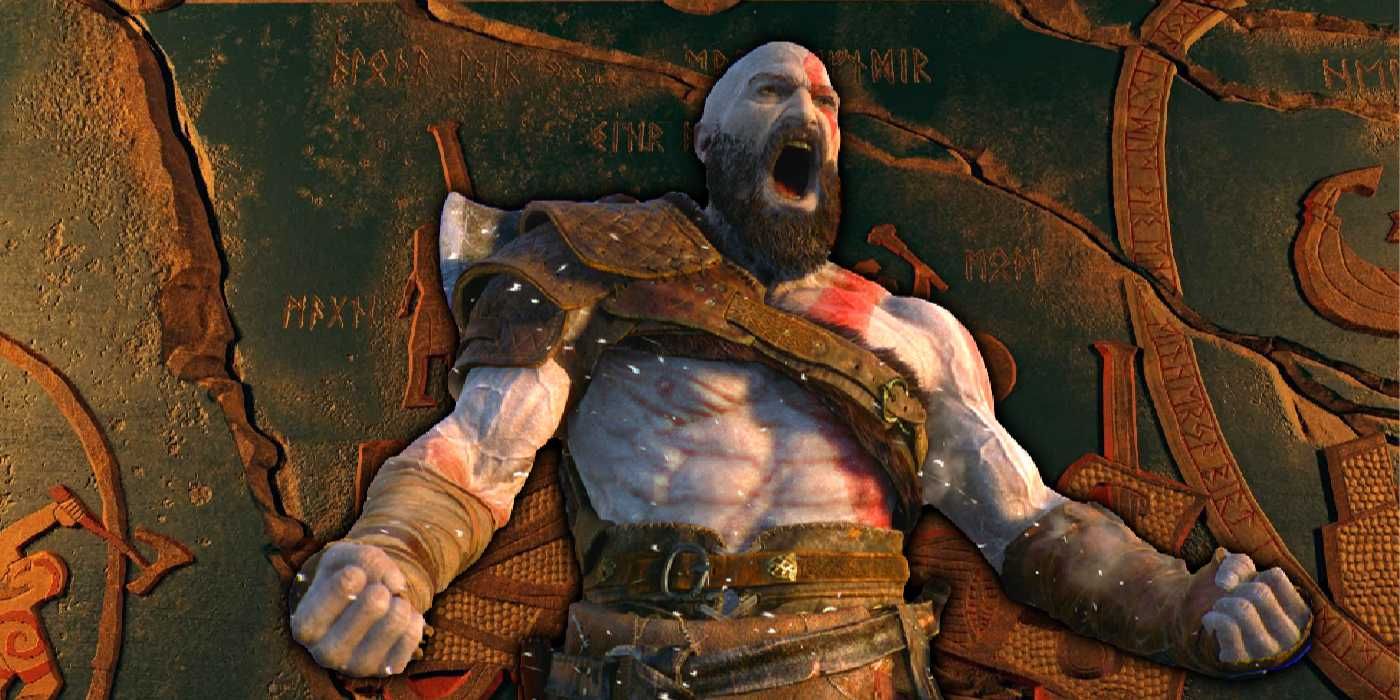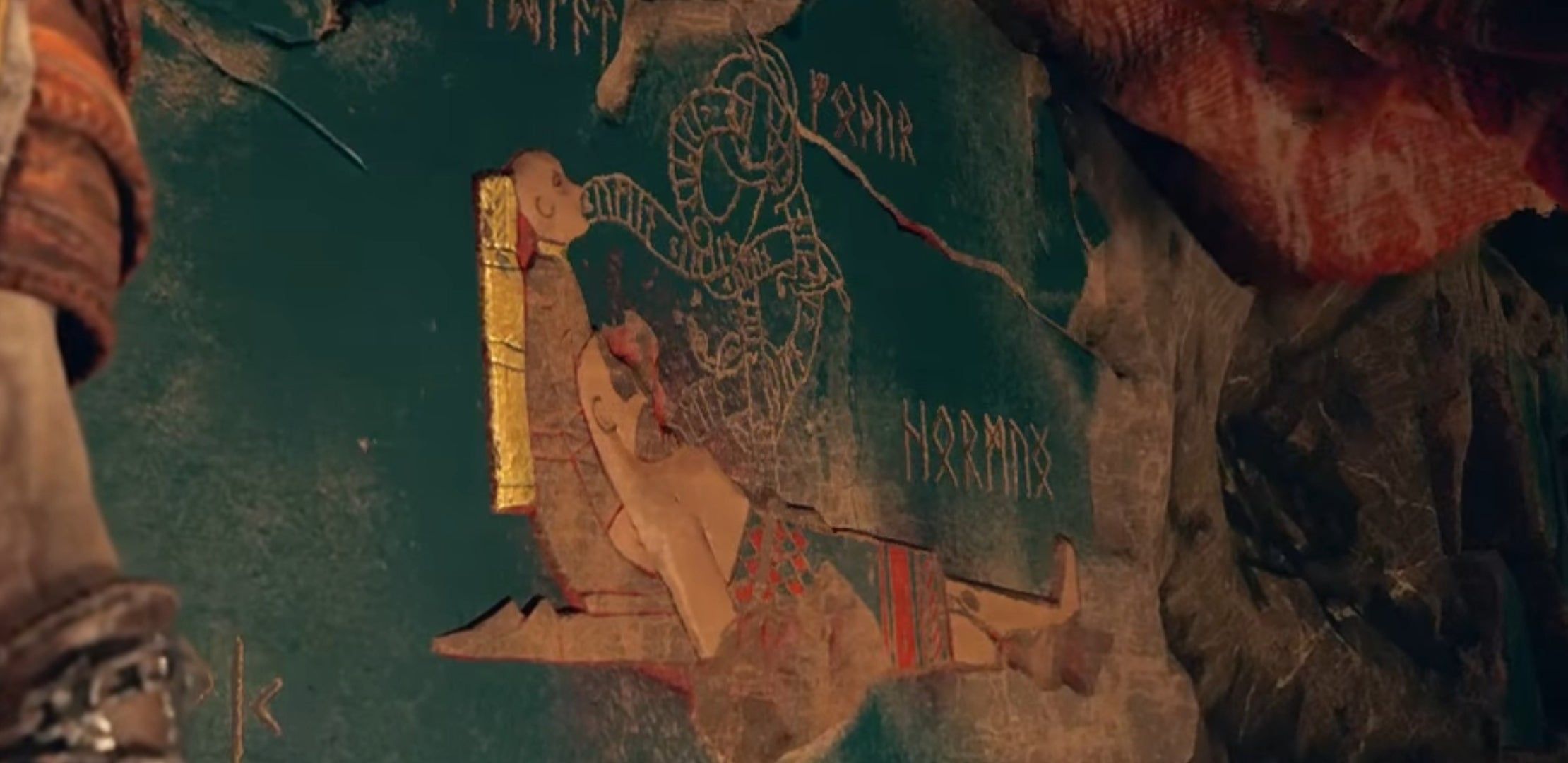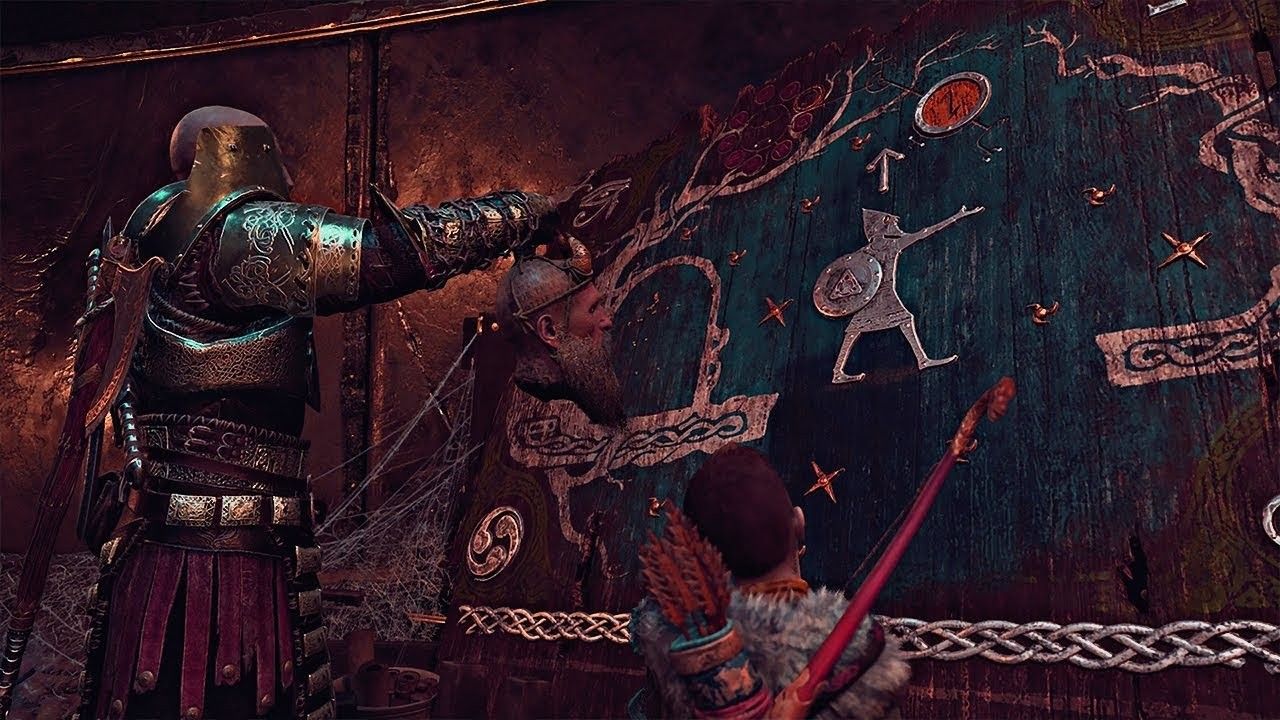The sequel to 2018’s God of War is currently in development at Santa Monica Studio. The next game's trailer teases that “Ragnarok is coming” after the last game left Kratos and Atreus facing Fimbulwinter, the start of the end of the world.
Fans having been digging through the last God of War and Norse mythology alike to piece together the possible events of the game’s Ragnarok sequel. One key clue from the most recent game – the Jotunheim mural – has been extensively analyzed. There’s one overlooked detail, however, which might change everything.
The Jotunheim Mural
At the end of God of War,Kratos and Atreus enter Jotunheim, the land of the giants, where they find a mural which prophesizes the events of Ragnarok. After Atreus has left, a piece of cloth blows aside, revealing a final panel to Kratos. The panel appears to depict Atreus cradling a dying figure in his arms as a mysterious, seemingly magical substance moves between the two figures’ mouths.
By the Jotunheim mural's image of Atreus are the runes for the word “svik,” which can be translated as betrayal or deceit. The figure Atreus is cradling is paired with runes which can be translated as “father.” This has led to much speculation about the identity of the man Atreus is holding.
The most obvious answer is that the other figure is Kratos, who is Atreus’ father. However, while Kratos is depicted earlier in the mural with his trademark tattoos, the figure in the mural’s final panel has no such markings. Kratos originally marked himself in honor of his brother, a child born with birthmarks who was killed by the Greek gods due to a prophecy that a “marked warrior” who would end the reign of the Olympians. The markings symbolize the original act of violence that inducts Kratos into the cycle of revenge which has haunted him throughout the series, and it’s possible that he will lose those markings to symbolize being freed from that cycle.
God of War Ragnarok's Jotunheim Mural Secrets: The Right Hand
Some fans have interpreted the lying figure as Odin. In this case, the runes wouldn’t represent Kratos and Atreus’ relationship with Kratos as the father and Atreus as the son who betrayed him. Instead, they’d represent two gods and their respective domains – Atreus as Loki, god of deceit, and Odin as the All-Father. The mural’s final panel is not entirely clear, but it’s possible to interpret the lying figure as missing an eye just as Odin is.
There is one detail that points to a third possibility, however. Though it's possible the mural is damaged, the figure is also missing their right arm. Tyr, the Norse god of war, loses his right arm to the wolf Fenrir who is prophesized to devour Odin during Ragnarok. Tyr has yet to be seen in-game, which makes it possible that it’s him depicted in the mural.
Other depictions of Tyr in-game don’t explicitly show him missing his hand, though sometimes his right hand is covered by a shield. This is odd considering that the missing hand is fundamental to Tyr's depiction in the myths. It’s possible that the loss of a hand to Fenrir will take place during Ragnarok itself during the game, or that, as the former Greek “god of war” Kratos will fulfill Tyr’s role in the myth in some way. This would also explain why a man with a missing hand is still identified as a “father.” How exactly Santa Monica Studio plans to handle the relationship between Tyr, Kratos, and their roles in Ragnarok could be one of the most interesting aspects of God of War’s upcoming sequel.
God of War: Ragnarok is slated for a 2021 release on PS5.

